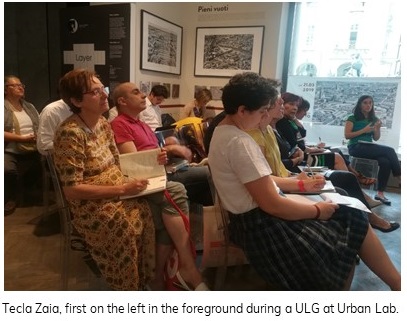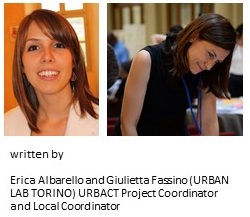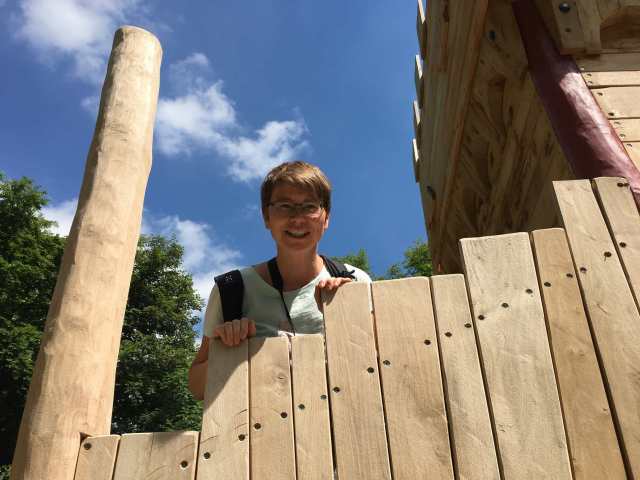From a housing agency to a living platform - the Torino transfer process
Edited on
01 March 2021What do Chemnitz and Torino have in common? An easy answer could be that, in the last century, both had been known as “the city of…”. The city of Karl Marx for the former Karl-Marx-Stadt in the eastern part of Germany, and the city of cars for Torino, the home to the FIAT factory.
Relax, this is not a quiz on cities!
Erica Albarello and Giulietta Fassino report on the transfer process in Torino and the important protagonists.

An interesting good practice…and the story begins
In 2018 Urban Lab, the urban center of Torino, for the first time got in touch with the City of Chemnitz – the URBACT awarded city for “the housing agency for shrinking cities” good practice. The decline in the number of inhabitants in Torino, the stagnation of the housing market, the new emerging forms of co-living and the need to rethink the use of a large heritage of unused public buildings, encouraged Urban Lab to embark upon the transfer network adventure. Not an easy task, considering the different size, history and socio-economic background of the two cities, as well as the variety of the other networking partners, but worth the effort in the light of the impressive results visible in the streets and neighborhoods around the statue of Karl Marx.

The Chemnitz Agency is an outstanding model on how vacant flats and buildings, patiently mapped and recorded, can be offered to the market as investment opportunities, triggering positive regeneration effects on the whole neighborhood. Will it fit Torino?
Torino, from one-company town to creative city. All that glitters ain’t gold
After being known for over a century as the grey factory city where all the public and private life revolved around the FIAT car industry, in the years 2000 Cinderella Torino bloomed as a beautiful livable city. The ancient heritage ranging from roman to baroque, the vast parks and cycling riversides, the sparky contemporary art scene gave a new identity to Torino and a revamped sense of pride to its citizens. Or at least to the remaining ones.
Yes, because truth is that the peak of 1.2 million inhabitants reached at the beginning of the 1970s with the massive immigration of factory workers from Southern Italy, is a fading memory compared to the barely 870,000 residents recorded in 2019.
Plenty of space or empty space?
“Mirafiori Sud is a suburban neighborhood born all of a sudden and with no infrastructure in 1967” tells Tecla Zaia “In 1969 an ambitious project planned to provide the area with a community center and all the necessary services, but just few of them have actually seen the light along the years. The empty shops and the underused spaces limit very much the attractiveness of the area. The large and bright rooms, the balconies and terraces, the central location in the neighborhood deserve more attention and should be used to offer cultural and community activities”.

Tecla, one of the most active members of Torino URBACT Local Group, is a pillar of the Mirafiori community, one of those people that makes change happen. Daughter of a FIAT worker, like most of the inhabitants of Mirafiori born in the 60s, Tecla could not bear anymore to see more and more empty apartments in her neighborhood. The Mirafiori production plant was drastically downsized, the sons and daughters of the workers moved to more attractive areas, little by little old people found themselves living alone in huge – but decaying – apartments, with no solid community support to rely on.
AlloggiaMI – an innovative student housing
In 2012 Tecla Zaia started to run a non-profit association whose aim is to give housing to people like students, researchers, transfer employees, in the apartments of Mirafiori Sud, especially by giving the opportunity to old landlords to rent the empty rooms in their flats. Along the years, more than 900 people from 51 countries have been welcomed, promoting cultural mix in the neighborhood, offering income to the Mirafiori inhabitants as well as low-cost accommodation to tenants, but most of all – as AlloggiaMI mission statement says – changing “the collective consciousness about the empty and older neighborhood”.
When asked about the future of AlloggiaMI, however, Tecla looks tired and rather pessimistic “It took me more than one hour to reach the city centre by bus today. If the institutions don’t support us, if they don’t provide the basic services, let alone some cultural offer, AlloggiaMI will come to an end very soon. Our will and enthusiasm are no longer enough”.
The ULG, the real driving force behind an URBACT project
Luckily, Tecla doesn’t say these words just to herself. She can share her worries with a room crowded of people. Some of them, like Paolo Sanna of the CoAbitare association, have been facing similar challenges in running their housing projects. Others, like Bianca Viarizzo of the Fondazione Sviluppo e Crescita CRT, work every day to provide support to deserving projects and initiatives.
This gathering is what the URBACT community calls a “local support group” and has been periodically organized in Torino since 2019 by Urban Lab in order to trigger a collaborative approach to the housing issue, by trying to involve as many relevant actors in Torino as possible. This is a key point of the URBACT transfer process: take a European good practice as the Chemnitz housing agency, present it to all the interested people that you can gather around a table and coffee, and ask what could work for them in their specific context.
Nice to meet you…again!
The hall at Urban Lab is always quite crowded when a ULG is called. This is not (only!) due to the nice sandwiches waiting for the surviving members at the end of the meeting. In Torino, affordable housing is quite an hot topic involving a number of associations, funding programs, local institutions and even banks. Many projects of co-housing have been developed, often by recovering neglected buildings in socially difficult neighbourhoods, such as the Luoghi Comuni residences in Porta Palazzo and San Salvario.
The Lo.C.A.Re service agency of the City of Torino has been favoring for many years the encounter between demand of affordable housing from people in difficult situations, and the private offer of apartments.
To tell the truth, the stakeholders in Torino admit that they actually have many occasions to meet along the year in conferences, workshops, formal and informal gatherings. Still, they are happy to participate in the URBACT local group. Even if this means adding one to the countless web-conferences in the Corona times.

The recipe for recovery: affordable housing + local services + community support
In the midst of Covid-19 lockdown, the members of the Torino ULG are more in turmoil than ever. The crisis has evidenced how decent and affordable housing is of vital importance, as well as the efficiency of locally-based services and the existence of a strong and pro-active local community. With this picture clear in mind, Bianca Viarizzo urges the other ULG members – starting from the fellow colleagues of the Compagnia di San Paolo bank foundation running the Programma Housing – to create an alliance to share data, competences and resources in favour of a more integrated and effective local system in terms of services to housing.
This partnership – informally represented by the ULG – is the first concrete step towards the adaptation of the Chemnitz good practice in Torino. Not a new organization marketing vacant housing stock, but an network of all those local stakeholders already performing (individually) some of the tasks performed by the German agency.
Re-learning the lesson
Torino is well-known for having pushed its vocational change in the years 2000s by involving a large number of stakeholders in its strategic planning participatory process. The ALT/BAU learning process has evidenced once again how connecting and coordinating public and private stakeholders can – without reinventing the wheel – hit the goal.
Time will tell if the vision of the Torino ULG – a living platform collecting all data sources and services connected to housing – is the right way to push reactivation actions and urban regeneration. If not, the Chemnitz Agency and ALT/BAU partners will be there to share the outcomes of their transfer experience and new or old lessons to be learned.
PS: There is also a Trabant 601 in the Fiat Museum in Torino. The Trabant 601 was the third and most widely built model of the Trabant series produced in the GDR. And it was driven by thousands in Karl-Marx-Stadt.

 Submitted by sabine.hausmann on
Submitted by sabine.hausmann on
